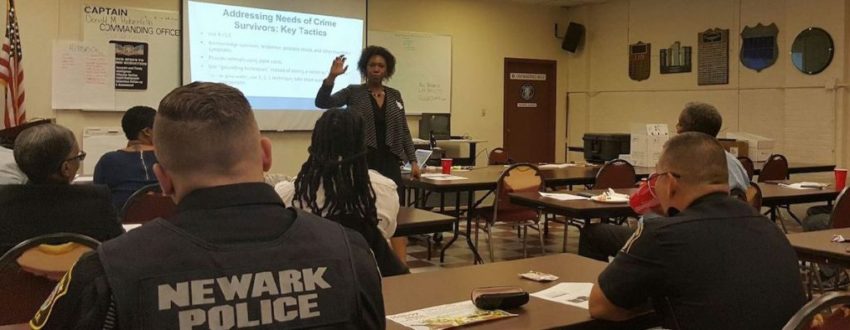
Share On Social!
This is part of the Salud America! Achieving a Cohesive Culture for Health Equity in Latino and All Communities: A Research Review»
Implicit Bias Training Programs
Mitigating implicit bias and promoting inclusivity “is a long-term goal requiring constant attention and repetition and a combination of general strategies that can have a positive influence across all groups of people affected by bias,” and can overlap between domains, according to Marcelin et al. and other researchers (see figure).43,74

Implicit bias training programs, such as those designed by the Kirwan Institute of Race and Ethnicity at Ohio State University, also aim to improve intergroup attitudes and relations, by “rewiring” subconscious associations.
The Kirwan Institute has made the first set of publicly available training modules available online, tailored specifically toward K-12 educators.79
Each module focuses on key topics like what implicit bias is, historic inequities in the education system, and education policy, with the ultimate goal of addressing disparities in K-12 education outcomes.
Key elements that make this approach promising are:
- it is being made available free of charge, since many school districts have limited ability to equip teachers and staff with resources and training related to implicit bias due to cost
- each module is a maximum of 45 minutes, to show respect for participants’ time
- modules can be accessed and completed at the participants’ own pace, making the program flexible enough to fit in the busy of lives of K-12 educators.79
A combination of videos and activities, as well as access to additional resources, form each module. Whether such training programs will result in long-term change is yet to be determined. However, the study by Marcelin et al notes that these kinds of implicit bias sessions (and ones that use the IAT), can be useful tools within a comprehensive organizational training program directed toward understanding and addressing individual unconscious bias.43
Forscher et al.83 used the IAT as a tool in an intervention aimed at provoking awareness of implicit bias in study participants. The authors hypothesized that, in treating implicit bias as an undesired habit, individuals could break the prejudice habit via the same methods used to break other habits: motivation, effort, and awareness. The latter of these would certainly be the most difficult, due to the nature of implicit bias, but the authors expanded upon an intervention by Devine et al. that involved measuring participants’ levels of implicit bias with the IAT and then discussing the results of the test with the individual participants during a feedback session. The feedback session was then followed by a presentation that demonstrated how implicit bias leads to discriminatory behavior that is harmful regardless of intent.
Finally, participants were educated about cognitive strategies to reduce bias, such as increased intergroup contact, perspective taking, and stereotype replacement. The initial study by Devine et al. had encouraging results at two weeks post-intervention, but Forscher et al. wondered about the long-term effects.83 Of note, this method of IAT assessment/acknowledgement of implicit biases/discussion of ways to combat an individuals’ implicit biases is still the approach currently used in implicit bias training programs.44,53,54
Similar to the initial study, the authors followed up with the participants two weeks after the intervention, at which time the participants reported being more likely to notice bias, label bias as wrong, and seek out interracial interactions with relative strangers. But would the effects of the intervention endure? At a two-year follow-up, participants reported being more likely to confront bias by writing comments on an article that advocated racial stereotyping, suggesting that the intervention did in fact have a lasting effect on breaking the so-called prejudice habit.83,69
For the latest data regarding success of implicit bias training programs and similar interventions, we refer readers to an annual review published by the Kirwan Institute, entitled “State of the Science: Implicit Bias Review,” which can be found at http://kirwaninstitute.osu.edu/researchandstrategicinitiatives/implicit-bias-review/.
Quick links from our Research Review »
See the Guide: System Justification!
See the Guide: Moral Disengagement!
More from our Research Review »
- Introduction/Methods
- Research: Poverty among Latinos
- Research: Rural Poverty
- Research: Poverty and Healthcare
- Research: Discrimination and Education
- Research: Discrimination and Outcomes
- Mechanism: Implicit Bias
- Mechanism: System Justification
- Mechanism: Moral Disengagement
- Strategy: Intergroup Contact Theory
- Strategy: Peer Modeling
- Strategy: Implicit Bias Training
- Strategy: Effective Communication
- Strategy: Social Media for Social Change
- Strategy: Building Social Cohesion
- Policy Implications
- Future Research
References for this section »
43. Marcelin JR, Marcelin JR, Siraj DS, Victor R, Kotadia S, Maldonado YA. The Impact of Unconscious Bias in Healthcare: How to Recognize and Mitigate It. J Infect Dis. 2019;220(2):262-273. doi:10.1093/infdis/jiz214
44. Staats C, Capatosto K, Tenney L, Mamo S. State of the Science Implicit Bias Review. http://kirwaninstitute.osu.edu/implicit-bias-training/resources/2017-implicit-bias-review.pdf. Accessed June 17, 2020.
53. West H, Capatosto K. Kelly Capatosto: Shedding New Light on Implicit Bias | Salud America. https://salud-america.org/kelly-capatosto-shedding-new-light-on-implicit-bias/. Published 2019. Accessed June 12, 2020.
54. Cantu S, Pasha J. Dr. Jabraan Pasha: Tearing Down Implicit Bias in the Doctor’s Office | Salud America. https://salud-america.org/dr-jabraan-pasha-tearing-down-implicit-bias-in-the-doctors-office/. Accessed June 12, 2020.
69. Bazo Vienrich A, Creighton MJ. What’s left unsaid? In-group solidarity and ethnic and racial differences in opposition to immigration in the United States. J Ethn Migr Stud . 2017. doi:10.1080/1369183X.2017.1334540
74. Devine PG, Forscher PS, Austin AJ, Cox WTL. Long-term reduction in implicit race bias: A prejudice habit-breaking intervention. J Exp Soc Psychol. 2012;48(6):1267-1278. doi:10.1016/j.jesp.2012.06.003
79. Ethnicity TOSUKI for the S of R and. The Kirwan Institute for the Study of Race & Ethnicity announces the nation’s first free and publicly available online implicit bias module series tailored specifically toward K-12 educators. http://kirwaninstitute.osu.edu/special-announcement-implicit-bias-training-available/. Published 2019.
83. Forscher PS, Mitamura C, Dix EL, Cox WTL, Devine PG. Breaking the prejudice habit: Mechanisms, timecourse, and longevity. J Exp Soc Psychol. 2017;72:133-146. doi:10.1016/j.jesp.2017.04.009
By The Numbers
3
Big Excuses
people use to justify discriminatory behavior



